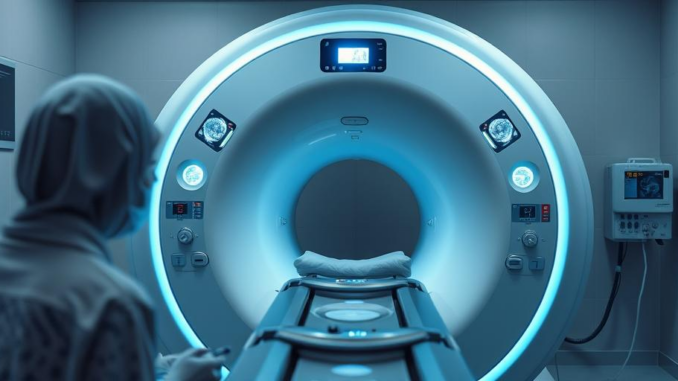
Summary
Researchers use MRI technology to observe metal-ion dissolution in lithium-ion batteries, opening doors to improved battery design and performance. This breakthrough allows scientists to visualize the degradation process in real time, paving the way for longer-lasting, safer batteries. The research has significant implications for electric vehicles and portable electronics.
TrueNAS by Esdebe: healthcare data storage that delivers value without sacrificing security.
** Main Story**
Lithium-ion batteries are the unsung heroes of our modern lives, quietly powering everything from our smartphones to those sleek electric vehicles we’re seeing more and more of. But let’s be honest, there’s a nagging problem: these batteries don’t last forever. One major culprit? The dissolving of metal ions from the battery’s cathode into the electrolyte, which is like a slow, silent leak that degrades performance. And, because we’re talking about such tiny amounts of metal, studying this process has always been a huge pain.
Now, imagine being able to watch this process as it unfolds. Researchers at Tohoku University have managed to do just that, using magnetic resonance imaging (MRI) to observe this metal dissolution in real-time. Sounds cool, right? This offers unprecedented insights into battery degradation, potentially changing the game when it comes to battery design.
Seeing the Unseeable
The Tohoku University team zeroed in on manganese (Mn) dissolving from a LiMn₂O₄ cathode. Think about MRIs – you probably associate them with hospitals and medical diagnoses. But here, they’re being used in a completely different way. MRI works by using magnetic fields and radio waves to create detailed images. Normally, in medical contexts, contrast agents like gadolinium are used to make things clearer. Well, the researchers realized that dissolved Mn²⁺ is paramagnetic; and acts a bit like a contrast agent, making it detectable by MRI. This clever trick allowed them to not only see the manganese dissolving but also to measure how much was dissolving inside the battery.
What This Means for Better Batteries
This research could be huge for building batteries that last longer and are safer. By seeing the dissolution happen in real-time, scientists can pinpoint what exactly causes the battery to degrade. This info can then be used to design new battery materials and electrolytes that minimize metal dissolution, which, in turn, extends the battery’s life.
Plus, the ability to see what’s going on in real-time means researchers can also study how different charging and discharging habits affect metal dissolution. You know, like, ‘is it better to charge my phone fully or just top it up throughout the day?’ This could help us all use our batteries more efficiently, getting the most bang for our buck. Or to be more precise, optimising battery usage for maximum performance.
Beyond Just Manganese
While the initial focus was on manganese, the beauty of this MRI technique is that it could be used to study other metals too. Metals like nickel and cobalt, which are also used in battery cathodes. That said, this broader applicability opens up really exciting avenues for digging into different battery chemistries. Consequently accelerating the development of next-generation battery technologies. Being able to visualize metal dissolution in real time could completely change battery research, leading to huge leaps forward in energy storage.
From the Hospital to the Lab
It’s amazing how often solutions come from unexpected places, isn’t it? The fact that MRI, a technique we usually associate with medicine, is now being used to solve a problem in materials science is a testament to the power of interdisciplinary collaboration. Adapting a medical imaging technique to a materials science problem is ingenious!
It highlights why it’s so important to think outside the box and not be afraid to explore unconventional methods. Sometimes, the biggest breakthroughs happen when you least expect them and you can only see what you have to see with the right tools. Or, well, with an MRI machine.
The Future Looks Bright (and Well-Powered)
Looking ahead, MRI could become a go-to tool for anyone working on battery development. Its unique ability to visualize dynamic processes inside batteries offers a perspective we’ve never had before. This knowledge will be critical as we try to create batteries that hold more power, last longer, and are safer. And ultimately, this will help us move towards a more sustainable energy future. We might even see MRI being used to study other battery components and processes, giving us an even more complete picture of how batteries work and how they break down. Who knows what other innovations are just around the corner?


So, MRIs went from scanning brains to spying on lithium-ion batteries? Guess our phones are getting better check-ups than we are! Maybe next they’ll diagnose my laptop’s chronic procrastination problem.
That’s a great point! Imagine the possibilities! An MRI for your laptop might be a bit overkill, but think about optimizing charging cycles based on real-time diagnostics. Maybe your laptop’s procrastination is just a symptom of poor power management after all! It could learn to optimize for peak performance. Thanks for the comment!
Editor: MedTechNews.Uk
Thank you to our Sponsor Esdebe
The real-time visualization of metal dissolution with MRI is a significant advancement. Extending this research to solid-state batteries could be particularly insightful, potentially addressing dendrite formation and improving their overall stability and performance.